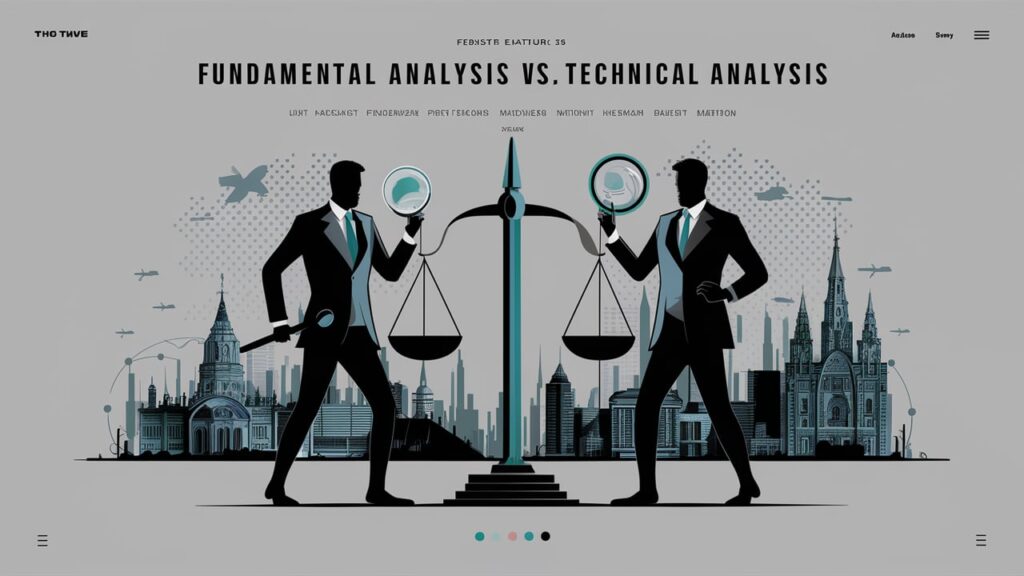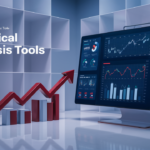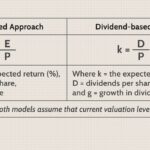Fundamental analysis in forex trading involves analyzing economic, social, and political factors to determine the value of a currency. Rather than relying solely on technical indicators, fundamental traders look at data points such as inflation rates, trade balances, GDP, job growth, and central bank interest rates to assess the strength of a currency.
By understanding the underlying economic conditions that affect a currency’s value, traders can make informed decisions about when to buy or sell. Interest rates are often considered a key fundamental indicator for forex traders, as changes in rates can impact the supply and demand for a currency.
Overall, fundamental analysis provides valuable insights into the long-term prospects of a currency and helps traders make more informed trading decisions.
The Essence Of Fundamental Analysis
Components Of Fundamental Analysis
When trading in the forex market, it’s essential to understand the foundational principles of fundamental analysis. This approach involves evaluating various economic, social, and political factors that can influence the value of a currency. By examining these components, traders can make informed decisions based on the overall health and stability of a country’s economy.
Forex And The Economic Machine
Understanding the relationship between forex and the economic machine is crucial for successful trading. The forex market is intricately connected to global economic conditions, and changes in economic indicators can have a significant impact on currency values. By analyzing these factors, traders can gain valuable insights into potential market movements and make strategic trading decisions.

Currency Valuation Drivers
Currency Valuation Drivers are critical factors that influence the value of a nation’s currency in the forex market. Understanding these drivers is essential for forex traders to make informed decisions. The two primary currency valuation drivers are Interest Rates Dynamics and Economic Indicators and Reports.
Interest Rates Dynamics
Interest rates play a pivotal role in currency valuation. When a country’s central bank increases its interest rates, it often attracts foreign capital, leading to an appreciation of the currency. Conversely, a decrease in interest rates may lead to currency depreciation. Forex traders closely monitor interest rate decisions and statements from central banks to anticipate potential currency movements.
Economic Indicators And Reports
Economic indicators and reports provide valuable insights into a country’s economic health, influencing its currency’s value. Key indicators such as Gross Domestic Product (GDP), inflation rates, employment data, and trade balances impact currency valuation. Positive economic data often strengthens a currency, while negative data can lead to depreciation. Forex traders analyze these indicators to gauge the strength of a currency and its potential future performance.
Economic Indicators To Watch
Fundamental analysis in forex trading involves analyzing various economic indicators to make informed trading decisions. These economic indicators can provide valuable insights into a country’s economic health and the potential movement of its currency. Understanding these indicators and their impact on the forex market is crucial for traders looking to make informed decisions.
Gdp As A Growth Barometer
Gross Domestic Product (GDP) is a key economic indicator that measures the total value of goods and services produced within a country. It serves as a crucial barometer for the economic health and growth of a nation. Forex traders closely monitor GDP reports as they can provide insights into the strength of a country’s economy and its currency’s potential performance. A growing GDP generally signals a healthy economy, which can lead to currency appreciation.
Employment Figures And Forex Impact
Employment figures, such as non-farm payrolls and unemployment rates, play a significant role in forex trading. These indicators provide valuable information about the labor market and overall economic conditions. Positive employment data, such as a decrease in unemployment rates and an increase in job creation, can strengthen a country’s currency, while negative figures may lead to currency depreciation. Forex traders closely monitor these indicators to gauge the economic stability and potential currency movements.
Interest Rates And Fx Markets
Interest rates play a significant role in the foreign exchange (FX) markets, especially when it comes to fundamental analysis in forex trading. Traders analyze interest rates as a fundamental indicator, as an increase in rates can lead to currency appreciation due to reduced supply.
Understanding the impact of interest rates on currency values is crucial for successful forex trading.
Central Banks And Monetary Policy
When it comes to forex trading, interest rates are a key factor that can affect the value of a currency. Central banks play a crucial role in setting interest rates and implementing monetary policies that can impact the forex market. For instance, if a central bank raises interest rates, it can attract more foreign investment, leading to an increase in demand for the currency and potentially strengthening its value.
Monetary policies also play an important role in the forex market. Central banks can use various tools to influence the supply and demand of their currency, such as open market operations, reserve requirements, and quantitative easing. Traders who keep an eye on these policies can position themselves accordingly and potentially profit from the market movements.
Interest Rate Decisions And Currency Strength
Interest rate decisions can have a significant impact on currency strength. Higher interest rates generally lead to a stronger currency, while lower interest rates can weaken it. This is because higher interest rates can attract foreign investment, increasing demand for the currency and potentially driving up its value. On the other hand, lower interest rates can make the currency less attractive to investors, leading to a decrease in demand and a potential decline in value.
Traders who keep track of interest rate decisions and the outlook for future changes can position themselves accordingly in the forex market. They can use fundamental analysis to evaluate the strength of a currency based on its interest rate and other economic indicators, and make informed trading decisions based on their analysis.
In conclusion, interest rates and monetary policies are important factors to consider in forex trading. Central banks play a crucial role in setting interest rates and implementing policies that can impact the forex market. Traders who keep an eye on these policies and use fundamental analysis to evaluate currency strength can potentially profit from the market movements.

Fundamental Analysis Vs. Technical Analysis
Fundamental analysis is a method used in forex trading to evaluate the strength of a currency based on economic data such as inflation, trade balance, GDP, and interest rates. Unlike technical analysis, which focuses on price patterns, fundamental analysis looks at the underlying factors that drive market movements.
Traders who utilize fundamental analysis aim to make informed decisions based on the fundamentals of a particular currency.
Fundamental Analysis vs. Technical Analysis
When it comes to forex trading, there are two primary methods of analysis: fundamental analysis and technical analysis. While both methods aim to provide insights into market behavior, they differ in their approach. Fundamental analysis is a method of evaluating the markets that uses multiple data sources to find an asset’s fair value. On the other hand, technical analysis is a method of evaluating securities by analyzing statistics generated by market activity, such as past prices and volume.
Comparative Advantages
Fundamental Analysis:
– Provides a big picture understanding of the market and the underlying forces driving it.
– Helps traders identify long-term trends and potential shifts in market sentiment.
– Allows traders to make informed decisions based on economic data and events.
Technical Analysis:
– Provides a more precise understanding of market behavior and price movements.
– Helps traders identify short-term trends and potential entry and exit points.
– Allows traders to use technical indicators to confirm or refute their trading decisions.
Blending Fundamental with Technical
While fundamental and technical analysis approaches differ, many traders use a combination of the two. By blending fundamental analysis with technical analysis, traders can get a better understanding of the market and make more informed trading decisions.
For example, a trader might use fundamental analysis to identify a long-term trend in the market, while using technical analysis to identify potential entry and exit points within that trend. Alternatively, a trader might use technical analysis to identify a short-term trend, while using fundamental analysis to confirm that the trend is supported by underlying economic data.
Conclusion
Both fundamental and technical analysis have their advantages and disadvantages. While fundamental analysis provides a big-picture understanding of the market, technical analysis provides a more precise understanding of market behavior. By blending the two, traders can get a better understanding of the market and make more informed trading decisions.
Trade Balance And Its Forex Implications
Trade balance plays a crucial role in forex trading as it impacts the strength of a currency. Fundamental analysis in forex involves analyzing factors such as trade balance, inflation, GDP, and central bank interest rates to determine the value of a currency.
By understanding these economic indicators, traders can make informed decisions in the forex market.
Trade Balance and Its Forex Implications
Understanding Trade Surpluses and Deficits
Trade balance is the difference between a country’s imports and exports. A trade surplus occurs when a country’s exports exceed its imports, resulting in a positive trade balance. On the other hand, a trade deficit occurs when a country’s imports exceed its exports, resulting in a negative trade balance.
Trade surpluses and deficits have a significant impact on forex trading as they reflect a country’s economic strength and performance. A trade surplus indicates that a country is exporting more goods than it is importing, which results in an increased demand for its currency. Conversely, a trade deficit indicates that a country is importing more goods than it is exporting, which results in a decreased demand for its currency.
Trade Data Release and Market Reaction
Trade data is released periodically by various countries, which provides traders with valuable insight into a country’s economic performance. The release of trade data can cause significant market volatility, as traders react to the data and adjust their positions accordingly.
When trade data is released, traders typically look for any significant changes in the trade balance, as well as any other relevant economic indicators such as inflation and interest rates. If the data is better than expected, it can result in a boost to the country’s currency, while worse-than-expected data can lead to a decrease in the currency’s value.
In conclusion, understanding the implications of trade balance is crucial for forex traders, as it can provide valuable insight into a country’s economic performance and impact the demand for its currency. By monitoring trade data releases and other economic indicators, traders can make informed decisions and potentially profit from market volatility.
Political Events And Currency Performance
Political events have a significant impact on currency performance, making fundamental analysis crucial in forex trading. Traders analyze economic data, such as inflation, trade balance, and central bank policies, to determine the strength of a currency and make informed trading decisions.
Elections And Policy Shifts
Political events can greatly impact the performance of currencies in Forex trading. One such event is elections, where the outcome can lead to significant changes in government policies that affect the economy. For example, if a country elects a government with a pro-business stance, it can lead to an increase in investments and growth in the economy, which can strengthen the currency. On the other hand, if a country elects a government with a protectionist stance, it can lead to a decrease in investments and weaker economic growth, which can weaken the currency.
Geopolitical Tensions And Safe-haven Currencies
Geopolitical tensions can also have a significant impact on currency performance. In times of political and economic uncertainty, investors tend to flock towards safe-haven currencies. Safe-haven currencies are those that are considered to be stable and reliable, such as the US dollar, Swiss franc, and Japanese yen. This is because these currencies are less likely to be affected by sudden changes in the market and are seen as a safe bet during uncertain times.
In conclusion, political events and geopolitical tensions can greatly impact currency performance in Forex trading. It is important for traders to stay informed about these events and their potential impact on the market. By analyzing fundamental indicators and staying up-to-date with current events, traders can make informed decisions about their trades and potentially increase their profits.

Credit: www.youtube.com
Developing A Fundamental Trading Strategy
Fundamental analysis in forex trading involves evaluating the economic factors that influence the value of a country’s currency. Developing a fundamental trading strategy is crucial for traders seeking to understand and anticipate market movements based on economic indicators and events.
Incorporating Economic Releases
Incorporating economic releases into a fundamental trading strategy involves monitoring key reports such as GDP, employment data, inflation rates, and central bank decisions. Traders analyze how these releases impact the currency markets and use the information to make informed trading decisions.
Long-term Vs. Short-term Fundamental Approaches
Long-term vs. short-term fundamental approaches represent different time horizons for analyzing economic factors. Long-term approaches focus on broader economic trends and policies, while short-term approaches consider immediate market reactions to news and events.
Practical Tips For Fundamental Analysis
When it comes to forex trading, fundamental analysis plays a crucial role in understanding the underlying factors that drive currency movements. Here are some practical tips for effectively incorporating fundamental analysis into your trading strategy:
Staying Informed With Economic Calendars
Staying updated with economic calendars is essential for fundamental analysis in forex trading. Economic events such as interest rate decisions, GDP releases, and employment reports can significantly impact currency valuations. By regularly checking economic calendars, traders can anticipate market volatility and make informed trading decisions.
Balancing Fundamental Analysis With Risk Management
While fundamental analysis provides valuable insights, it’s important to balance it with robust risk management strategies. Proper risk assessment and position sizing are essential to mitigate potential losses resulting from unexpected market movements. Traders should integrate fundamental analysis into their risk management framework to make well-informed and prudent trading choices.

Credit: www.dailyfx.com
Case Studies: Fundamental Analysis In Action
When it comes to forex trading, fundamental analysis plays a crucial role in understanding the underlying factors that drive currency movements. Through case studies, we can delve into historical forex market shifts and recent trades influenced by fundamentals to gain valuable insights into the impact of fundamental analysis on forex trading.
Historical Forex Market Shifts
Over the years, fundamental analysis has been instrumental in understanding historical forex market shifts. By examining past economic events, geopolitical developments, and central bank policies, traders can identify trends and patterns that have influenced currency movements. For instance, the Brexit referendum in 2016 led to a significant depreciation of the British pound as uncertainty surrounding the UK’s future economic relationship with the EU weighed on investor sentiment.
Recent Trades Influenced By Fundamentals
In recent times, several trades have been directly influenced by fundamental factors. For example, the US Federal Reserve’s decision to raise interest rates can lead to a strengthening of the US dollar as higher interest rates attract foreign capital, driving up the currency’s value. Similarly, geopolitical tensions or trade disputes can cause currency fluctuations as market participants assess the potential impact on global trade and economic stability.

Credit: www.babypips.com
Frequently Asked Questions
How Do You Analyse Fundamentals In Forex?
To analyze fundamentals in forex, traders analyze data points such as inflation, trade balance, GDP, job growth, and interest rates of a country. These indicators help determine the strength of a currency. Fundamental analysis is essential in understanding economic conditions that impact the value of a country’s currency in the forex market.
What Is The Best Fundamental Indicator For Forex?
The best fundamental indicator for forex is interest rates. An increase in interest rates generally leads to currency appreciation due to a decrease in supply. Fundamental forex traders analyze factors such as inflation, trade balance, GDP, job growth, and central bank benchmark interest rates to determine the strength of a currency.
Which Analysis Is Best For Forex Trading?
Fundamental analysis is best for Forex trading. It involves monitoring economic data such as interest rates, GDP, and unemployment rates to analyze market changes. This method helps determine a currency’s strength based on a country’s economic indicators.
How To Use Fundamental Analysis In Trading?
To use fundamental analysis in trading, analyze economic data and indicators to determine an asset’s value. Study financial reports, ratios, and future prospects, and monitor factors like interest rates and GDP for informed decisions. Understand the company, its competitors, and economic conditions to make strategic trading choices.
Conclusion
Fundamental analysis is a crucial tool in forex trading that helps traders understand the underlying factors driving currency value. By analyzing economic, social, and political forces, traders can make informed decisions based on data points such as inflation, trade balance, GDP, and interest rates.
Unlike technical analysis, which focuses on price patterns, fundamental analysis provides a deeper understanding of the market and helps traders anticipate long-term trends. Incorporating fundamental analysis into your trading strategy can greatly enhance your success in the forex market.


